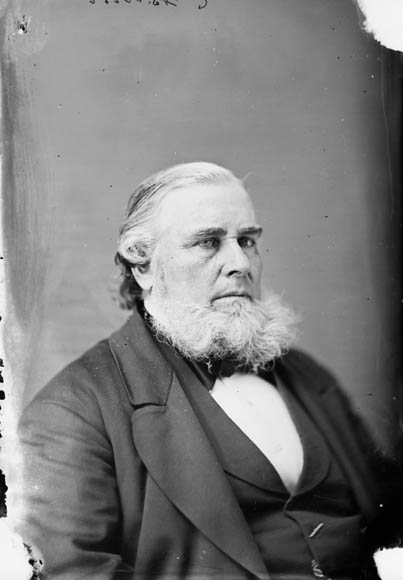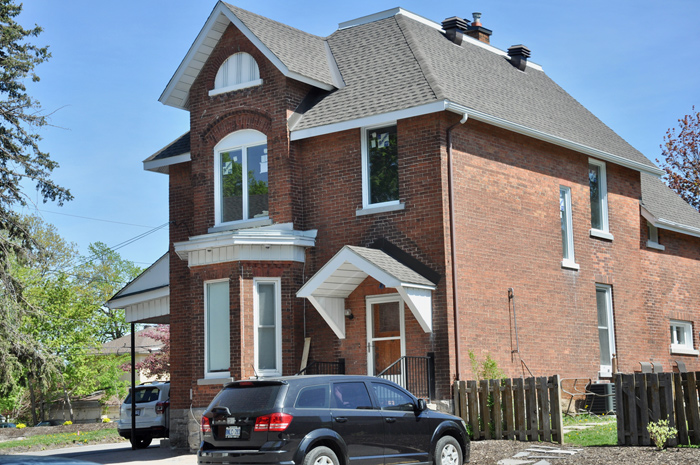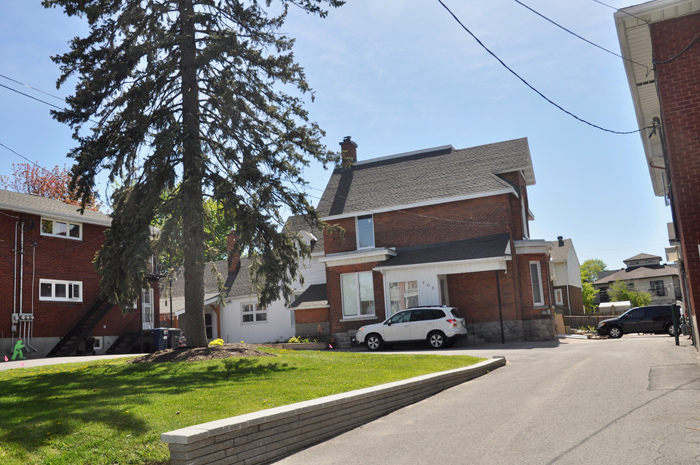By Dave Allston –
Just off Richmond Road, at 408 Tweedsmuir Ave., stands an impressive brick house. Tucked behind the Circle K (formerly Mac’s) gas station and convenience store, is one of Westboro’s original homes. Now closing in on 130 years of age, it represents a significant amount of local history.

In the mid-19th century, Senator Hon. James Skead saw great potential in the Westboro area. He acquired as much land as he could get his hands on and constructed a giant sawmill at what is now Westboro Beach. In the 1870s he created a brand new community – almost single-handedly – aptly known as Skead’s Mills. Sadly, fires and economic depression saw him lose almost everything by the early 1880s. After his death in 1884, the banks and his widow began selling off his vast area land holdings.
One gentleman who also had a particular interest in the area was James Magee. Magee was the son of two of Nepean’s earliest settlers, Irish immigrants Charles Magee and Frances Delamere, who established a farm in the vicinity of Lincoln Fields around 1820. Born along the Richmond Road in 1838, James Magee spent his life as a farmer, cattle dealer, and cattle drover (a person who moves cattle over long distances). He married Henrietta Henry, who was also a member of a pioneer Nepean family. The couple had no children and resided primarily on a 15-acre parcel between Carling and Richmond (where Biagio’s restaurant exists today) and farmed many more acres south of Carling.
In the late 1880s, James and Henrietta sold and moved to Louisa Street in Centretown, but the change was short-lived. In April 1890, Magee acquired 21.5 acres of land from Skead’s estate, the area covering today’s Tweedsmuir and Athlone, from Richmond south to near Clare. (Assessment rolls also noted that this property contained more than 12 acres of “woodland.”)
It was here in 1891 that Magee established his new farm, and he built his large brick home slightly back from Richmond Road with a direct view of the Ottawa River and Laurentian Mountains. It had four bedrooms, a parlor, dining room, sitting room, kitchen, and a large basement.
The village of Skead’s Mills was in a period of depression. The mill burned down in August 1888, and there was little opportunity in the neighbourhood aside from farming. Magee was a rare investor who saw potential. Three years later, Magee purchased a large amount of acreage north along the Ottawa River east of Westboro Beach for his cattle stockyards.
Magee clearly had a restless personality. Despite relocating back to Richmond Road after trying life in the city, he made several attempts beginning as early as 1897 to sell his new farmhouse. In 1901, he acquired one of the largest farms in the Bell’s Corners area: James Bearman’s huge 300-acre Silver Spring Farm. Magee never moved there, and instead sold it in 1905 to his nephew, Bower Henry (who would later found Producer’s Dairy).
Magee was heavily involved in community affairs. In June 1905, he helped Westboro become incorporated as a Police Village with its own council and budget. Magee was elected as one of the three trustees of this first board.
In May 1909, Magee, then 70 years old and still in the cattle business, decided to take advantage of the Westboro real estate boom and subdivided almost all his entire 21-acre farm for development. He kept a large square block of land along Richmond Road for himself and created 122 lots on two streets, Strathcona (now Tweedsmuir) and Magee (now Athlone). Notably, in order to create equal depth for all his lots, Magee decided to run Strathcona askew from where the existing portion ran south of his property, which is why Tweedsmuir north of Clare isn’t precisely aligned with Tweedsmuir south of Clare. As well, Clare Gardens Park’s existence is directly due to how Magee laid out his property.
Magee named his subdivision “Springdale Park” (a name which never caught on) and established strict building conditions of higher-class, brick homes with mandatory 20-foot setbacks. What’s more, there was an abundance of pure water on the property via its many wells and springs.
Sadly, James Magee passed away in August 1911 and never lived to see his subdivision prosper. In the time after her husband’s death, Henrietta steadily sold the remaining lots and watched Westboro grow around the old house. Henrietta remained in the home until her death in 1925.


The Magee home was owned by Charles O. Armstrong of Armstrong Motors in the 1930s, and contractor Francis Clark in the 1940s, but has been in the Tannis family since the 1950.
Dave Allston is a local historian and the author of The Kitchissippi Museum. His family has lived in Kitchissippi for six generations. Do you have early memories or photos to share? Send your email to stories@kitchissippi.com.